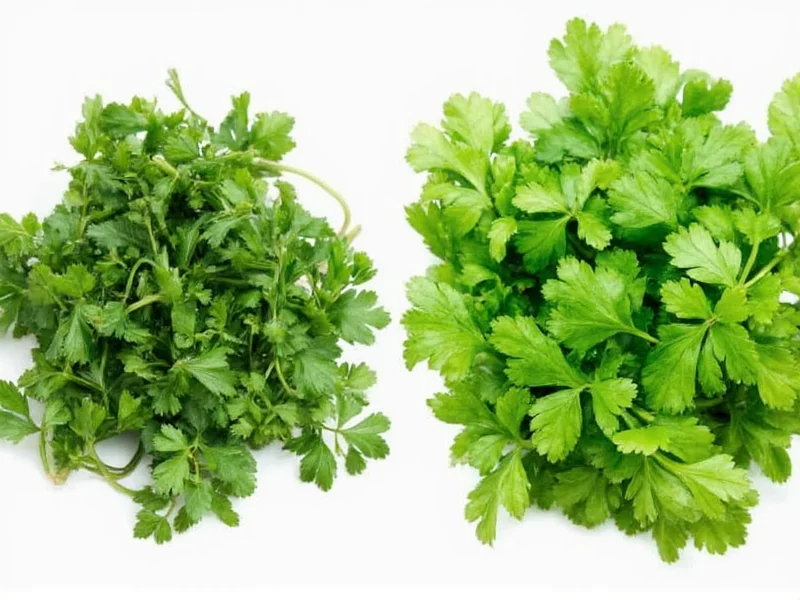Understanding the fresh coriander vs cilantro confusion is essential for navigating global recipes and grocery shopping. This common culinary misunderstanding stems from regional language differences rather than botanical distinctions. Let's clarify this herb's identity once and for all.
The Botanical Reality: One Plant, Two Names
Coriandrum sativum, the sole species in the coriander genus, produces both the leafy greens and the round seeds used worldwide in cooking. The plant doesn't change based on geography—only our naming conventions do. When examining fresh coriander vs cilantro side by side, you're looking at identical specimens labeled differently according to local convention.
Regional Terminology Explained
The terminology divide follows distinct geographical patterns:
| Region | Leafy Greens Term | Seeds Term |
|---|---|---|
| United States & Canada | Cilantro | Coriander |
| United Kingdom, Australia, India | Coriander (leaves) | Coriander (seeds) |
| Spain, Mexico, Latin America | Cilantro | Coriandros or Cilantro en grano |
| France | Cilantro or Coriandre | Graines de coriandre |
The word "cilantro" comes from the Spanish term for the herb, while "coriander" derives from the Greek "koris" (bug), referencing the plant's distinctive scent. This etymological difference explains why fresh coriander vs cilantro confusion persists across English-speaking regions.
Identifying Fresh Coriander/Cilantro
Whether you call it fresh coriander or cilantro, the herb has distinctive characteristics:
- Delicate, lacy green leaves with a rounded shape
- Thin, tender stems that are entirely edible
- A bright, citrusy aroma with subtle peppery notes
- Often sold in bunches with roots intact (particularly in Asian markets)
When shopping for fresh coriander vs cilantro, look for vibrant green leaves without yellowing or wilting. The presence of roots indicates exceptional freshness, as these can be stored in water to extend the herb's shelf life.
Culinary Applications: Leaves vs Seeds
Understanding the difference between fresh coriander leaves and coriander seeds is crucial for proper recipe execution:
| Plant Part | Flavor Profile | Common Culinary Uses |
|---|---|---|
| Leaves & Stems (Cilantro/Coriander greens) | Bright, citrusy, slightly peppery | Salsas, chutneys, garnishes, curries, ceviche, Vietnamese pho |
| Seeds (Coriander) | Warm, nutty, citrusy when raw; earthy when toasted | Curry powders, pickling spices, baked goods, sausages, marinades |
Many home cooks mistakenly believe there's a taste difference between fresh coriander and cilantro, but the flavor profile remains identical—only the name changes based on location. The confusion often leads to recipe errors when cooks substitute dried coriander seeds for fresh leaves (or vice versa), which creates dramatically different results.
Substitution Guidance for Recipe Success
When navigating recipes that specify fresh coriander vs cilantro, remember these substitution principles:
- Fresh for fresh: If a Mexican recipe calls for cilantro and you're in London, purchase "coriander" (the leafy kind)
- Never substitute seeds for leaves: Coriander seeds have a completely different flavor profile than the fresh leaves
- Alternative herbs: When fresh coriander/cilantro is unavailable, flat-leaf parsley offers the closest visual substitute (though flavor differs)
- Dried alternatives: Dried cilantro exists but lacks the vibrant flavor of fresh—use sparingly as a last resort
Preservation Techniques for Maximum Freshness
Proper storage significantly extends the shelf life of your fresh coriander or cilantro:
- With roots intact: Place stems in a glass of water (like flowers), cover loosely with a plastic bag, and refrigerate
- Without roots: Wrap in slightly damp paper towels and store in airtight container
- Long-term storage: Chop leaves, mix with oil, and freeze in ice cube trays
- Drying method: Hang small bunches upside down in a dark, dry place (better for seeds than leaves)
Understanding how to preserve fresh coriander leaves ensures you always have this essential herb available, regardless of what your local market calls it. The key is recognizing that whether labeled cilantro or coriander, you're working with the same versatile culinary ingredient.
Global Recipe Interpretation Guide
When encountering recipes from different regions, use this quick reference:
- American recipes: "Cilantro" = fresh leaves; "Coriander" = seeds
- British/Commonwealth recipes: "Coriander" could mean leaves or seeds (check context)
- Indian recipes: "Coriander leaves" specifies fresh; "dhania" refers to seeds
- Mexican recipes: "Cilantro" always means the fresh herb
This knowledge prevents common mistakes like using coriander seeds in a salsa that requires fresh cilantro, or vice versa. The difference between fresh coriander and cilantro isn't botanical—it's purely linguistic, but understanding this distinction makes you a more versatile cook.











 浙公网安备
33010002000092号
浙公网安备
33010002000092号 浙B2-20120091-4
浙B2-20120091-4